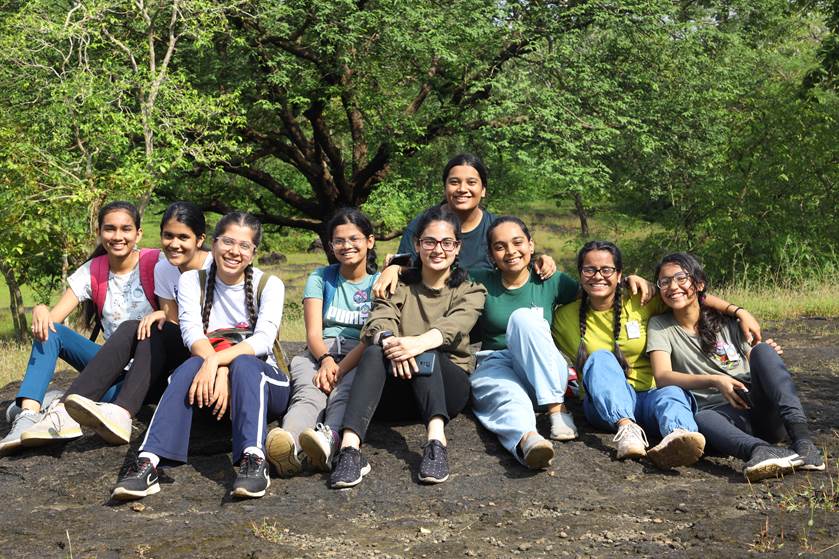Theory of mind is the ability to attribute mental states — beliefs, intents, desires, emotions, and knowledge — to ourselves and others. Theory of mind is an important part of social understanding and social cognition.
It is called a theory of mind rather than a theory of behavior because much of people’s behavior depends on what goes on in their minds. We explain our own actions by referring to our beliefs, desires, and other mental states, and we attempt to interpret and predict other people’s actions by considering their mental states. (Astington & Dack, 2008)
History
David Premack and Guy Woodruff (1978) are the first ones who discussed about Theory of Mind. They wrote an article, “Does the chimpanzee have a theory of mind?”
How do psychologists Assess Theory of Mind?
False-Task Belief
The False-Belief Task was developed by two Austrian psychologists, Heinz Wimmer and Josef Perner, used False-Belief task as an assessment tool to study how and at what age children and toddlers develop theory of mind. In the task, the children were told a story by the experimenters using dolls and boxes as a prop.
Task given to the children
How does Theory of Mind Develop?
The basic premise of Theory of Mind is the ability of the children to predict human behavior. Psychologists says that children who passes the False-belief task are capable of metarepresentation- ability to understand other people beliefs, desires and what others think which is different from what they (children) think. Theory of Mind is the ability to attribute to different types of mental states. There are types of mental states- believe, want(desire), intend. All three are interconnected.
| Types of Mental State | Content |
|---|---|
| Believe | Car is kept in the cupboard |
| Want (desire) | To play with the car |
| Intend (action) | Gets up and open the cupboard |
The desire and belief when combine together makes the child to take some action to fulfil it determines that child understands his/her desire and takes action to fulfil it. There is a difference between beliefs and desire. Beliefs are either True or False. Desires are either fulfilled or unfulfilled.
Beliefs are usually aligned with the world. If the belief corresponds to way the things are in the world. It’s true. If the beliefs do not correspond to way the things are in the world. It’s a false belief. The false belief can be changed by making it fit to what it is actually in the world- “mind-to-world” situation.
Desires act as a motivation to carry out the action to achieve the desirable outcome. If the outcome achieved aligns with the desire than it is fulfilled, if the outcome is not achieved than the desire is unfulfilled. The intention (action) works as the mediator (middle man) between the desire and outcome.
Example: Mother wants to make her daughter (tina) happy. Tina wants a new set of dolls since a long time. So, mother goes and buy the new set of doll and gits it to Tine. Tina becomes super happy when she sees the doll and seeing her happy, Mother is happy.
| Mental States | Content |
|---|---|
| Desire | To make her daughter happy |
| Intend (action) | Buy a new set of dolls |
| Outcome | Tina is happy (Mother is happy) |
| Period | Age-Range | Major Development |
|---|---|---|
| Infancy | Birth-18 months old | Social Perception |
| Toddler and pre-school | 18 months old – 3 years old | Mental Awareness |
| Pre-school | 4 and 5 Years old | Meta-representation |
| School Age | 6 years onwards | Recursion and Interpretation |
The child starts developing from their birth. In new born baby to 8 month of age, social perception is developed. The developing behaviors are Imitation, Dyadic smiling and vocalizing, Joint attention: Follow other’s pointing and gaze Direct other’s attention with point and gaze- Social referencing, discriminate animates from inanimate, Discriminate goals from movements , Sensitive to agents’ knowledge state.
Important changes come at about 18 months of age, when children clearly begin to show awareness of the subjective nature of psychological experience. This is seen in Piagetian sensorimotor stage 6 behaviors, such as, finding invisibly displaced objects, and solving problems by insight, language development, distinguish between mental and real, pretend play, Aware of intentions, desires, and emotions, desire-based reasoning , aware of perception and knowledge acquisition, Use mental-state terms.
There are further developments in children after the preschool years. The main developments in theory of mind at the beginning of the school years is an understanding of mental-state recursion, that is, the embedding of one mental state in another. Children become aware that others don’t have belief and desires for the world. They also hold beliefs and contents about the other person which can be false. These beliefs are also called Second-Order Beliefs.
Factors Affecting Theory of Mind
The main focus of research so far has been identifying factors, both within the child and in the child’s environment, that are associated with the development of theory of mid, which some children achieve soon after they are 3 years of age and others not until age 5 years. A number of factors, such as executive functioning, language ability, and social competence, are correlated with the understanding of Theory of Mind.
Executive functions are self-regulatory cognitive processes, such as inhibition, planning, resistance to interference, and control of attention and motor responses. During the years from 3 to 5, children’s performance on executive function tasks is correlated with their performance on false-belief tasks. Some researchers believe that executive functioning is actually required for children to develop a theory of mind, in that children must be able to control their own representations of the world before understanding others’ representation.
Pretend Play is engaging in imagined states where they fantasize certain objects or create a world that do not exist. Researchers argue that pretend play encourages theory-of-mind development and this is supported by data showing that pre-schoolers who score higher on theory-of-mind tasks engage in more fantasy and pretense.
Language Ability is one of the factors that contribute in the development of theory of mind. Many studies have shown relations between false-belief understanding and various language skills, including general language, receptive vocabulary, semantics, and syntax independent of age. Higher the language skills of the children better they can understand the complex mental state terms used by the experimenters and can perform better on theory of mind tasks.
Family Environment has also been identified as one of the factors. A number of studies show that the kind of conversational experiences that children have is related to theory-of-mind development. The parents should talk similarly like adults with their children as it contributes to their language ability. Children living in join families develop theory of mind skills sooner as they experience teasing, jokes, pranks, deception among their siblings.
Many studies have been conducted of theory of mind with Autistic children. The finding suggested that only about 20% of children with autism succeed on standard false-belief tasks. Most striking, though, is their difficulty in understanding other people’s beliefs, as shown in their performance on the false-belief task. Children with autism also tend to fail theory-of-mind tasks that require deception and have difficulty understanding belief-based emotions.
Studies have shown that people with mental health disorders and behaviors problems have issues in development of theory of mind skills. A 2007 meta-analysis (an analysis that combines the results of multiple empirical studies) reveals a stable deficit of theory of mind in people with schizophrenia, as evidenced by their consistent, poor performance on false belief tasks (Sprong et al., 2007).
References
Sprong, M., Schothorst, P., Vos, E., Hox, J., & Van Engeland, H. (2007). Theory of mind in schizophrenia: meta-analysis. The British Journal of Psychiatry, 191(1), 5-13.
Astington JW and Baird JA (eds.) (2005) Why Language Matters for Theory of Mind. New York: Oxford University Press Astington JW (1993) The Child’s Discovery of the Mind. Cambridge, MA: Harvard University Press J.W. Astington, L.A. Dack, (2008). Theory of Mind.. Encyclopedia of Infant and Early Childhood Development, Pages 365-379 Gopnik, A., & Astington, J. W. (1988). Children’s understanding of changes in their mental states. Child Development, 62, 98–110.

